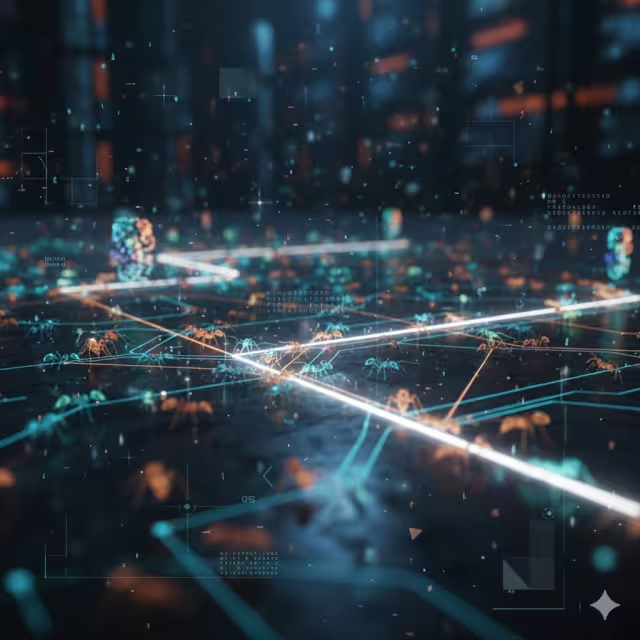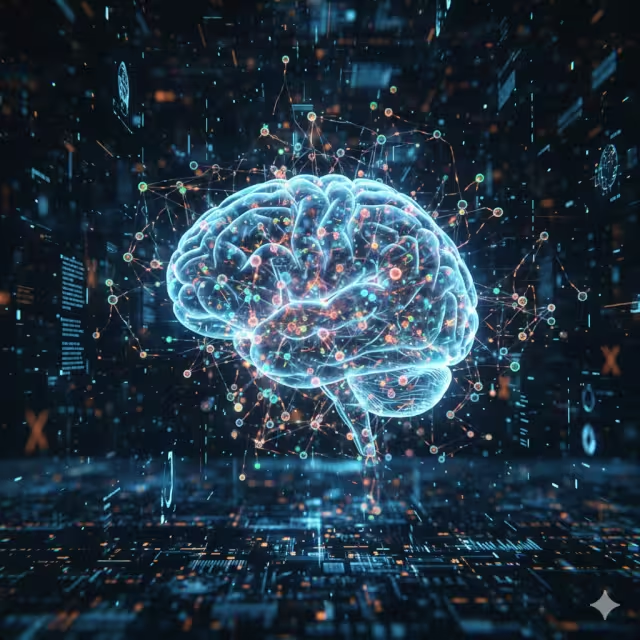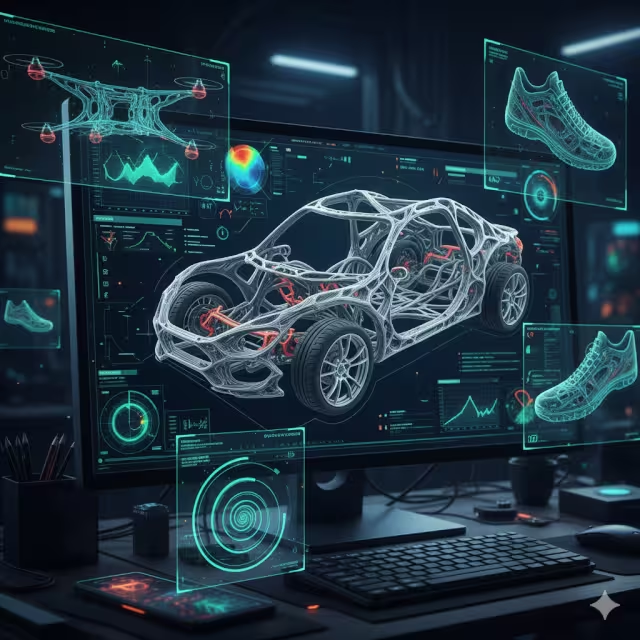Nature is the planet’s most successful research and development lab. It has been running 3.8 billion years of field tests, finding solutions to nearly every complex problem imaginable: energy production, data storage, network efficiency, and system resilience. The digital world, a relatively new invention, is only now beginning to borrow nature’s proven source code. This is the core of biomimicry.
When we apply biomimicry to the digital context, we are moving beyond physical imitation, such as making a car shaped like a bird. We are looking at the abstract: the processes, the systems, and the strategies nature uses. Biomimicry is the technical emulation of nature’s models to solve complex human problems. In our field, this means applying these strategies to software, algorithms, and user interfaces. This article will analyze specific case studies of successful biomimicry in digital design. My objective is to demonstrate, with data and examples, how emulating natural strategies leads to digital systems that are far more efficient, resilient, and intuitive than those we try to invent from scratch.
Table of Contents
Foundational Distinction: Biomimicry vs. Biophilic Design
As a specialist in Biophilic Design, I must first clarify a common point of confusion. Many people use the terms “biophilia” and “biomimicry” interchangeably. They are fundamentally different, though related, concepts. Understanding this difference is critical to grasping the functional power of biomimicry.
A question often asked is: What is the difference between biophilia and biomimicry?
Biophilic Design, which is my primary expertise at Silphium Design, focuses on the human connection to nature. It is based on the “biophilia hypothesis,” which suggests humans have an innate need to affiliate with other life or nature. In website design, this means improving a user’s well-being. We do this by incorporating natural patterns, such as fractals, natural textures, and other natural features, to create a sense of visual calm. We use natural light analogs, organic shapes, and nature-based color palettes. Biophilic design answers a human need for a less stressful, more engaging digital environment.
Biomimicry, by contrast, focuses on function. It is a technical discipline. Biomimicry does not ask how nature makes us feel; it asks how nature works. It is not about the look of a fractal, but the mathematical logic of its branching structure. It emulates a natural strategy to solve a technical problem. For example, using that same fractal logic to design a database query that searches complex information efficiently.
Why does this distinction matter? One optimizes for human well-being (biophilia), while the other optimizes for system performance (biomimicry). A website can be biophilic without using biomimicry (it looks natural but runs on standard code). A piece of software can use biomimicry without being biophilic (an invisible algorithm that optimizes server traffic but has a sterile interface). The most powerful designs, however, use both. They use biomimicry for the underlying architecture and biophilia for the user-facing interface, creating a system that is both highly efficient and a pleasure to use.
The Framework: The 3 Levels of Biomimicry
To properly analyze the case studies, we must first understand the formal framework of biomimicry. This discipline is not random imitation; it is a structured method of inquiry. Innovators using biomimicry typically operate at three distinct levels of depth.
A common query is: What are the 3 levels of biomimicry?
- Organism Level: This is the most direct level of biomimicry. It involves mimicking a specific organism’s form or function. In the physical world, this is like the famous Shinkansen bullet train in Japan. Its nose was redesigned to mimic the shape of a Kingfisher’s beak, allowing it to exit tunnels silently and with less energy. In digital design, this might mean creating a UI element that unfurls like a leaf, revealing information in a way that is both efficient and spatially logical.
- Behavior Level: This level of biomimicry is more complex. It involves mimicking how organisms interact with each other or their environment. The most potent examples of this in the digital world come from swarm intelligence. Instead of copying one ant, you copy the behavior of the entire ant colony to solve a problem. This level focuses on decentralized, collective problem-solving.
- Ecosystem Level: This is the deepest and most impactful level of biomimicry. It involves mimicking the systemic processes and cycles of an entire ecosystem. How does a forest recycle 100% of its waste? How does it manage and store water? How does it build resilience to disturbances like fire? In the digital world, this translates to concepts like circular data economies, self-healing networks, and truly sustainable web design that is “zero-waste” in its energy use.
For the purpose of this article, our case studies will primarily focus on the Organism and Behavior levels. These are the areas where digital biomimicry has produced the most mature and measurable results. The Ecosystem level remains the next great frontier for our field.
Case Studies: Biomimicry in Digital Application
This is where the theory of biomimicry becomes tangible. By examining functional, real world examples, we can see how this discipline is not just an academic exercise, but a superior method for engineering.
Case Study 1: Swarm Intelligence (Ants & Bees) in Algorithmic Optimization

Natural Model: Ant Colony Optimization (ACO). If you have ever watched ants, you know they are masters of logistics. When a colony finds a food source, ants lay down chemical trails called pheromones. Other ants are programmed to follow these trails.
Here is the critical mechanism: The pheromone evaporates over time. Ants that happen to take a shorter path to the food can make the round trip faster. This means they lay down new pheromones on that short path more frequently. The shorter path gets a stronger chemical signal, while the longer paths fade away. Within a short time, the entire colony has converged on the mathematically most efficient route. It is a decentralized, adaptive, and incredibly robust system.
Digital Application: This exact behavior-level biomimicry is used in telecommunications routing. When your data packet (part of an email or a website) travels across the internet, it needs to find the fastest path. ACO algorithms send out small “digital ants” (data packets) that explore different routes. The routes that report back fastest are “reinforced,” and the main flow of data is directed along that optimal path.
This biomimicry is also used by logistics companies like UPS to route their delivery trucks, saving millions in fuel and time. In web development, this biomimicry logic is applied to server load balancing. When a website (like an e-commerce store on Black Friday) gets a massive traffic spike, the system uses swarm logic to distribute the incoming requests efficiently across multiple servers, preventing a crash.
SEO/Web Relevance: This biomimicry principle can be used to optimize a website’s internal linking structure. By tracking user flow (digital pheromone trails), we can identify the most efficient paths to conversion (a “buy” button or contact form). We can then strengthen these paths by making those links more prominent, effectively guiding all users along the proven, shortest route. This is a clear case of biomimicry solving a core business problem.
Case Study 2: Slime Mold (Physarum polycephalum) in Network Design
Natural Model: The slime mold, specifically Physarum polycephalum, is a bizarre and brilliant organism. It is a single celled amoeba that can grow to several square meters, acting as one giant, “thinking” mass. When it forages for food, it sends out tendrils (protoplasmic tubes) in all directions. When a tendril finds a food source (like bacteria or oat flakes), it begins to pulse, sending signals back to the main body.
The organism then makes a “decision.” It strengthens the tubes connecting the most valuable food sources and retracts the inefficient, exploratory tubes. The end result is the most efficient possible topological network connecting all food sources, balancing shortest path with resilience (having a few backup routes).
Digital Application: The most famous biomimicry experiment involving slime mold occurred in 2010. Scientists in Japan placed oat flakes on a map in the exact locations of the cities surrounding Tokyo. They then introduced the slime mold. Within 26 hours, the organism had grown a network connecting the “cities” that was almost identical to the highly efficient, human-engineered Tokyo railway system.
This biomimicry is now being used to design resilient, decentralized data networks. It can model how to build a city’s power grid, a communications network, or a computer network that can automatically heal itself. If one “path” is cut, the slime mold logic allows the network to automatically reroute and reinforce the next most efficient path, all without a central command.
SEO/Web Relevance: For a large, complex website (like a university or a major publisher), we can apply this biomimicry model. By treating high value pages (like core services or product categories) as “food sources,” we can use a slime mold algorithm to model the most efficient sitemap architecture. This ensures that users and search engine crawlers can find the most important content with the fewest clicks, maximizing crawl efficiency and user flow. This is a sophisticated biomimicry strategy for technical SEO.
Case Study 3: Neural Networks (The Human Brain) in Machine Learning

Natural Model: This is perhaps the most famous and impactful example of biomimicry in our daily lives. The natural model is the human brain. Your brain is not a single, fast processor. It is a vast, parallel network of billions of slow, simple processors called neurons. Each neuron receives electrochemical inputs from other neurons. If those inputs cross a certain threshold, the neuron “fires,” sending its own signal to the next layer of neurons.
Learning happens by strengthening or weakening the connections (synapses) between these neurons. If one pathway leads to a successful outcome (e.g., “that red berry is sweet”), that connection is reinforced. This is how we learn to recognize patterns.
Digital Application: The entire field of machine learning and modern Artificial Intelligence (AI) is a direct application of this biomimicry. A neural network in a computer is a software model of this biological structure. It is made of digital “neurons” arranged in layers. When you train an AI to recognize a cat in a photo, you feed it thousands of images (inputs). The network “learns” by adjusting the weights (synapses) between its neurons until it consistently fires in a way that means “cat.”
SEO/Web Relevance: This form of biomimicry is already running the internet. Google’s search algorithms, particularly RankBrain and BERT, are nature-inspired computing. They use neural networks to understand the intent and context of your search query, not just the keywords. When you type “best place to eat near me,” it understands you want a list of local restaurants, not a philosophical essay on dining. This biomimicry also powers the personalization engines on Netflix, Amazon, and Spotify, which learn your “pattern” of behavior to recommend new content.
Case Study 4: Evolutionary Algorithms (Natural Selection) in Generative Design

Natural Model: The engine of all life is natural selection. This process is based on three simple rules:
- Iteration/Variation: Organisms reproduce, creating offspring with slight, random variations (mutations).
- Selection: The environment presents a challenge (a “selection pressure”), such as a predator or a change in climate.
- Adaptation: The variations that are best suited to the challenge (“the fittest”) are more likely to survive, reproduce, and pass on their successful traits.
Over millions of generations, this simple, iterative algorithm “evolves” incredibly complex and optimized solutions, like the human eye or the camouflage of a chameleon.
Digital Application: We use this biomimicry directly in a process called generative design. An engineer using this method does not “design” the final product. Instead, they “design” the goals and constraints.
For example, to design a lightweight car chassis, the engineer tells the software: “I need a part that connects these four points, can withstand this much force, and must use the least amount of material possible.” The software then evolves a solution. It generates 100 random designs (variations). It tests them all against the goals (selection). The top 10 designs are “bred” together, their best features are combined, and the process repeats. After thousands of “generations,” the algorithm produces a final design. It often looks strange and alien, like bone or a plant root system, because it is an optimized form that a human designer would never have thought of.
SEO/Web Relevance: This biomimicry is now used in advanced A/B testing platforms. Instead of a human manually testing “Button A” vs. “Button B,” we can use an evolutionary algorithm. We set the goal: “Evolve a landing page for the highest possible conversion rate.” The algorithm will then test thousands of variations of headlines, images, button colors, and layouts, breeding the most successful combinations until it “evolves” the mathematically optimal page design. This is biomimicry as a direct optimization tool.
Case Study 5: The Golden Ratio & Fractals in UI Layout
Natural Model: Nature is full of repeating mathematical patterns. The two most famous are the Golden Ratio (approximately 1:1.618) and fractals (self-repeating patterns at different scales). The Golden Ratio appears in the spiral of a seashell, the arrangement of sunflower seeds, and the proportions of a pinecone. Fractals are the branching logic of trees, river deltas, ferns, and our own circulatory systems.
Digital Application: This is where biomimicry and biophilia overlap.
A common question is: How is biomimicry used in UI/UX design?
The biophilic use is making a layout look like a seashell, which is aesthetically pleasing. The biomimicry use is applying the function of these patterns.
- Golden Ratio: The function of this ratio is visual harmony. The human eye is biologically programmed to find it balanced and to scan it in a specific, efficient way. In UI design, biomimicry means using the Golden Ratio to create a layout grid. A main content block and a sidebar that conform to this 1:1.618 ratio will naturally guide the user’s eye from the most important information (the main block) to the secondary information (the sidebar) without causing cognitive strain.
- Fractals: The function of a fractal is to organize high complexity in a simple, repeating, and scalable way. A tree branch has the same basic pattern as the whole tree. In UI/UX, we use this biomimicry to design navigation. A complex sitemap or menu system that uses fractal logic (e.g., categories, sub-categories, and sub-sub-categories all follow the same layout and interaction logic) feels intuitive. The user does not have to learn a new system at each level. They inherently understand how to navigate because the pattern is predictable, just like in nature.
Implementation: How to Apply Biomimicry to Your Digital Strategy
These case studies show the power of biomimicry. The next logical step is implementation. How does a company, a designer, or a developer actually start using biomimicry?
The Biomimicry Institute provides a formal framework called “Challenge to Biology.” It is a methodology for translating a human problem into a natural solution.
- Define: First, you must clearly define your technical problem. It is crucial to state it as a function to be performed. For example: “Our server load is inefficient and crashes during traffic spikes.”
- Biologize: Next, you translate that problem into a biological question. Ask, “How does nature…?” How does nature manage surges in resources? How do natural systems distribute resources without a central command? How do ecosystems handle a sudden influx?
- Discover: This is the research phase. You look for natural models that solve your specific, “biologized” question. The primary resource for this is the Biomimicry Institute’s database, AskNature.org. This is a vast, open-source database of nature’s strategies, categorized by function. A search for “distribute resources” might lead you to slime molds, ant colonies, or the vascular systems of plants.
- Emulate: Finally, you analyze the natural strategy and emulate its principles to create your digital solution. This is where you would develop a swarm-based load balancing algorithm, or a sitemap based on slime mold logic.
This structured process moves biomimicry from a cool idea to a repeatable engineering discipline.
Key figures like Janine Benyus, author of the foundational text Biomimicry: Innovation Inspired by Nature and co-founder of the Biomimicry Institute, have championed this methodology. Her work, along with the AskNature.org database, provides the critical tools for any professional to begin the work of biomimicry.
Conclusion: The Future is Systemic
The case studies we have analyzed demonstrate a clear, functional truth: biomimicry in digital design is the practical application of nature’s proven logic. When we copy the function of an ant colony, a slime mold, or a neural network, we are building on a 3.8-billion-year R&D legacy. The results are systems that are not just inspired by nature, but perform like it: efficiently, adaptively, and resiliently.
The next frontier for biomimicry is to move from the organism and behavior levels to the ecosystem level. The challenge is no longer just to build a faster algorithm, but to build a more sustainable and regenerative digital world.
We must ask new questions. How can our digital infrastructure mimic a forest ecosystem, where the waste from one process is the “food” for another? How can we create data centers that function like prairies, sequestering carbon and cooling their environments? This is the future of sustainable web design and circular data economies.
The most effective and sophisticated design solutions for our most complex problems are already available. They are in the world around us. As designers, developers, and strategists, our task is to shift our perspective: to stop trying to invent everything from scratch, and to start discovering the solutions nature has already perfected.